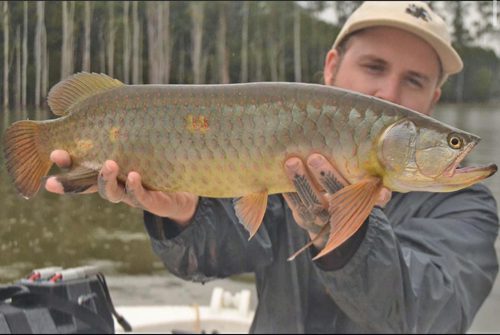G’day fellow fishos, I hope all have been well and are recovering from the past few weather events we’ve encountered and endured – which have also played a big role in fishing our waterways. Targeting mackerel
For offshore fishing, before our last downpour of rain, people were starting to do well on spanish mackerel on various types of techniques – from slow trolling live and dead bait to spinning and trolling hard-body lures. Targeting mackerel
The rain did slow things up with the big push of dirty freshwater, but things look as though they’re coming back into full swing before the water starts to cool down. Targeting mackerel

The type of rod for the various techniques definitely makes a difference and also makes the opportunity easier and better for the fisher to catch a couple of speedy tasty critters.
For slow trolling or hard-bodies, using an overhead rod and reel with about 10-15kg mono line is more than enough.
This allows you to have the drag pressure set and the strength in the shorter rod.
Leaving the reel in strike and having the ability to go up from there, helps to control the fish.
Whereas the spin reels tend to want to let more drag go when doing this.
Though if mackerel are concentrated to a particular bait ball, on a small section of reef or perhaps you’re lucky enough to have seen them in a bust-up, the spin reel’s ability for long-distance casting definitely sets the two apart. Ta
rgeting mackerel

Because these fish are known for preferring bait moving at high speed, having a high-speed spin reel with a ratio of 6:2:1 or more will certainly get your metal lure, plastic or stickbait moving. This more often than not results in them wanting to hunt down and smash your lure.
That being said, fishing like this can result in by-catch species such as tuna.
Off the coast, we have a variety of species that can make for a good time if you happen to find schools of longtail tuna.
Inshore, the fishing has been a little quiet, though with the dirty water around, it has been great for bream fishing in the back of canals.
Small little deep diving hard-bodies have worked a treat for people using lighter gear and luckily enough, doing this has resulted in a few mangrove jack captures as well.

Mangrove jack will still be around, though as we start to see a few cooler mornings roll through, instead of doing one cast at a desirable looking piece of structure, consider doing two or three to make sure that if the fish is there it gets annoyed enough to whack your lure or bait.
For the freshwater side of things, with the downpours of late there is still a lot of current getting through our creeks, which is making for tricky times. But when it slows up, using little surface lures and spinnerbaits will make for great sessions because the fish will have had a good chance to move around in all the water, which will burn a bit of energy.
So, they should be fired up to eat whatever comes their way.
In Hinze Dam at the moment, there has been a high volume of saratoga, and sight-casting these fish is becoming a common occurrence.
They are showing confidence sitting slightly below the water surface, making it an easier job for anglers to cast and get lures directly in the zone to hook a toga.
Using surface lures and shallow divers have so far paid off the most.
So, good luck out there this month and see you on the water
 Bush ‘n Beach Fishing Magazine Location reports & tips for fishing, boating, camping, kayaking, 4WDing in Queensland and Northern NSW
Bush ‘n Beach Fishing Magazine Location reports & tips for fishing, boating, camping, kayaking, 4WDing in Queensland and Northern NSW









